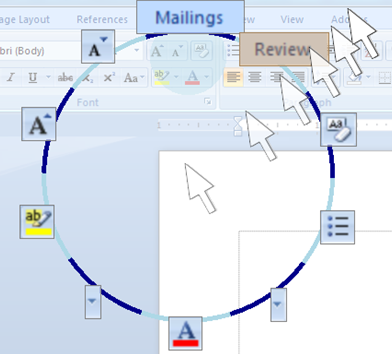Stuart Jones
Miguel Alex Cardenas
Reference Information
Title: Enhanced Area Cursors: Reducing Fine Pointing Demands for People with Motor Impairments
Authors: Leah Findlater, Alex Jansen, Kristen Shinohara, Morgan Dixon, Peter Kamb, Joshua Rakita, Jacob Wobbrock
When/Where: UIST 2010, New York, New York
Summary
This article aimed to evaluate whether or not enhanced area cursor designs improve performance for motor impaired computer users. Enhanced area cursors are designed to work with small, dense targets, which motor impaired users have difficulties with. The motor impaired users included in the study included impairments such as cerebal palsy and muscular dystrophy.
The study tested four different cursors, two that use goal crossing (where the user selects a target by crossing over it) and two that provide magnification for selection purposes. The design of the cursors was improved by including the insight of one motor impaired user that tested each of them during the design process. Each cursor involves two stages, activation and selection, in order to distinguish between intentional and unintentional target choices.
For the actual study, twelve impaired participants and twelve non-impaired participants were given the same tests. The participants were reimbursed for their time, and the non-impaired participants were used as a base case for testing and evaluation purposes. The evaluation observed cursor type, target size, target spacing, and target clutter. Time to select targets and error rate were used to evaluate the cursors. It was determined that both of the crossing cursors and one of the magnifying cursors reduces errors compared to the normal cursor methods. The majority of impaired users preferred that magnifying cursor, while the normal point cursor was the least preferred. The article suggests future improvements, such as studying real-world applications of the cursors.
 |
| An example of an enhanced area cursor, the Click-and-Cross, that allows the user to select targets by moving the cursor through an associated target arc. Source: faculty.washington.edu |
This paper was interesting, because it considers the part of the population with motor impairments that make using computers difficult. A lot of products aren't designed for these people, so it can be difficult to accomplish tasks on the computer that are easy for others. Multiple versions of cursors were tested by people with various different impairments. The only possible problems with this evaluation were that different motor impairments affect people in different ways, therefore clumping many of them together into one study may not have resulted in entirely useful results. Still, this paper brought up many interesting points regarding software for the motor impaired population that could be implemented in future to provide cheap solutions to create easy computer environments for those that currently have difficulties using computers.
I agree that his paper brought up many good points about software for motor impaired
ReplyDelete